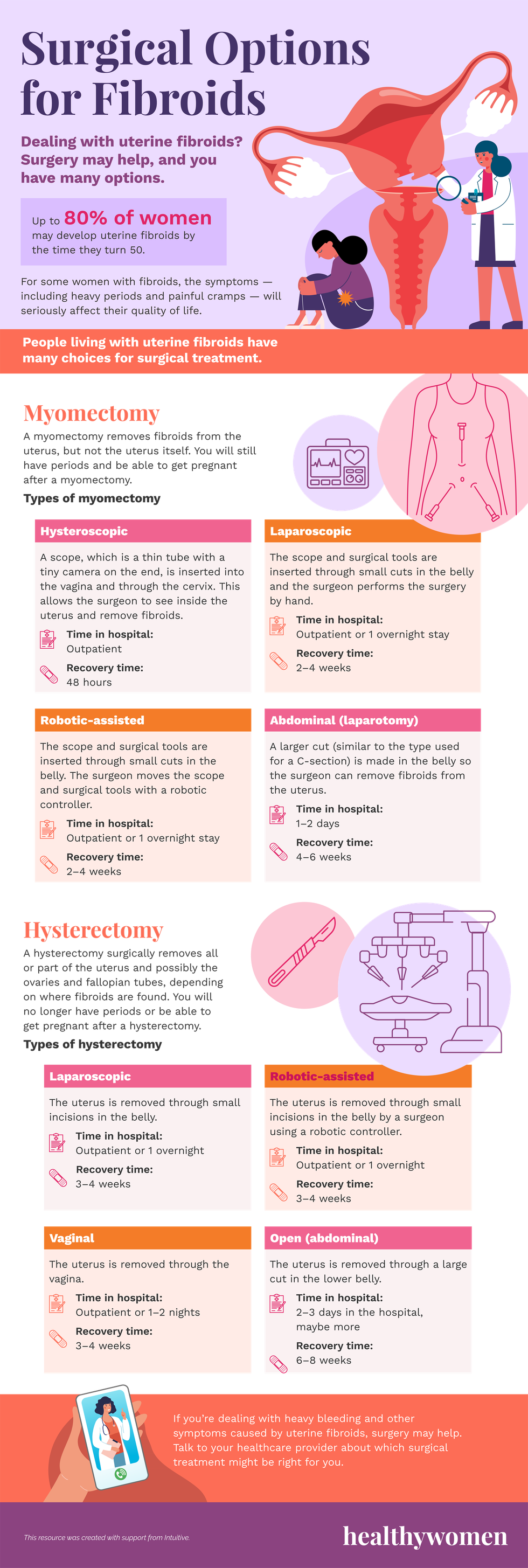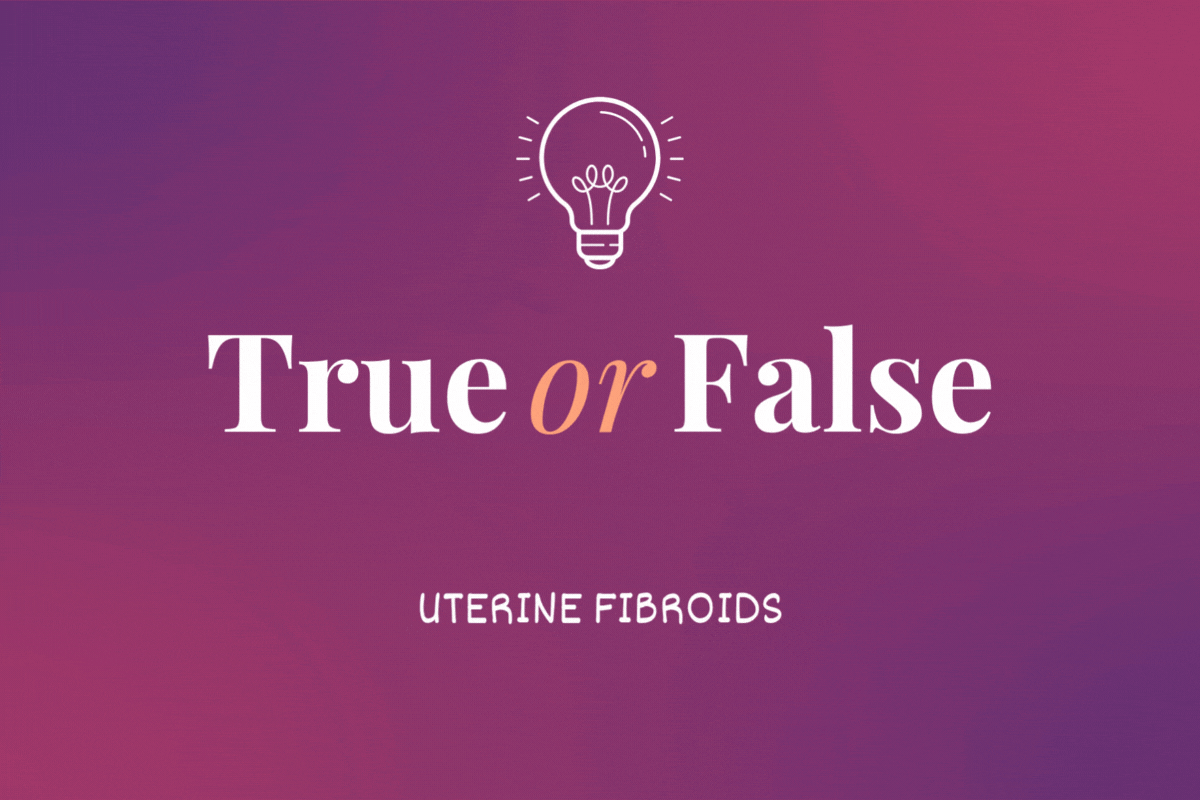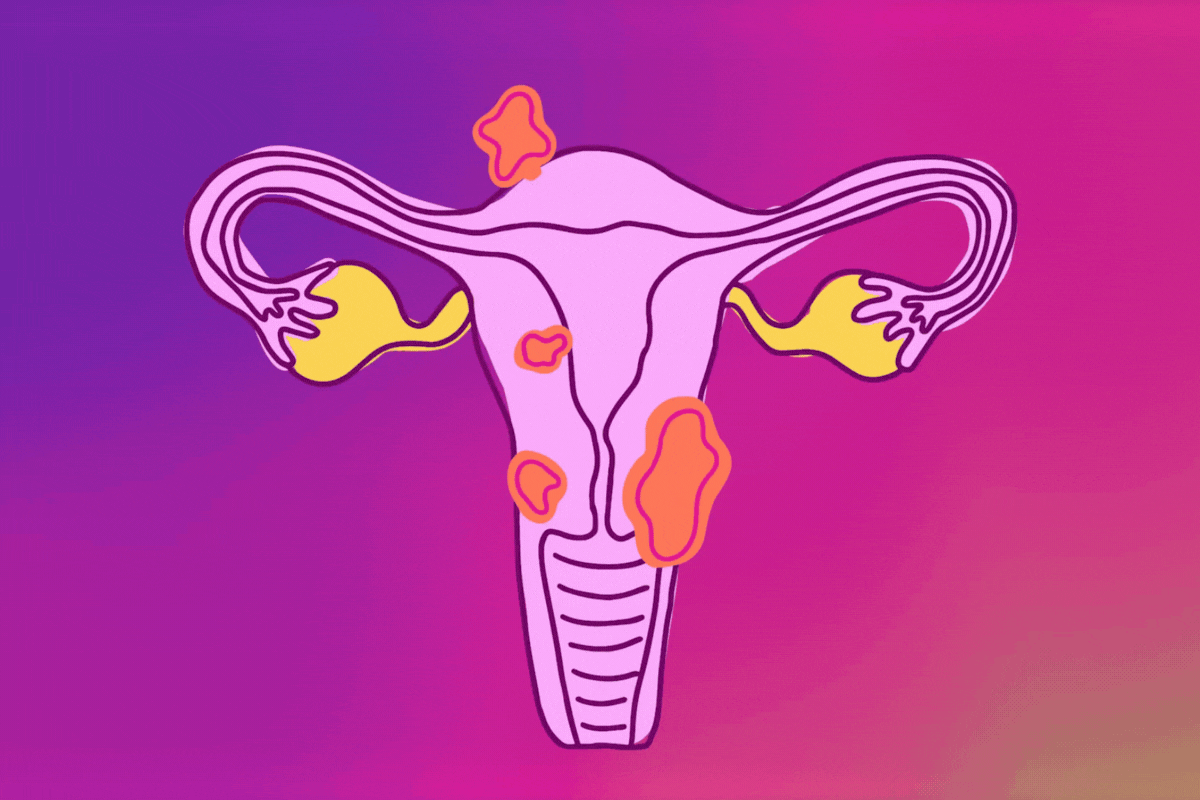Up to 80% of women may develop uterine fibroids by the time they turn 50.
For some women with fibroids, the symptoms — including heavy periods and painful cramps — will seriously affect their quality of life.
People living with uterine fibroids have many choices for surgical treatment.
Myomectomy
A myomectomy removes fibroids from the uterus, but not the uterus itself. You will still have periods and be able to get pregnant after a myomectomy.
Types of myomectomy
- Hysteroscopic: A scope, which is a thin tube with a tiny camera on the end, is inserted into the vagina and through the cervix. This allows the surgeon to see inside the uterus and remove fibroids.
Time in hospital: Outpatient
Recovery time: 48 hours
- Laparoscopic: The scope and surgical tools are inserted through small cuts in the belly and the surgeon performs the surgery by hand.
Time in hospital: Outpatient or 1 overnight stay
Recovery time: 2–4 weeks
- Robotic-assisted: The scope and surgical tools are inserted through small cuts in the belly. The surgeon moves the scope and surgical tools with a robotic controller.
Time in hospital: Outpatient or 1 overnight stay
Recovery time: 2–4 weeks
- Abdominal (laparotomy): A larger cut (similar to the type used for a C-section) is made in the belly so the surgeon can remove fibroids from the uterus.
Time in hospital: 1–2 days
Recovery time: 4–6 weeks
A hysterectomy surgically removes all or part of the uterus and possibly the ovaries and fallopian tubes, depending on where fibroids are found. You will no longer have periods or be able to get pregnant after a hysterectomy.
Types of hysterectomy
- Laparoscopic: The uterus is removed through small incisions in the belly.
Time in hospital: Outpatient or 1 overnight
Recovery time: 3–4 weeks
- Robotic-assisted : The uterus is removed through small incisions in the belly by a surgeon using a robotic controller.
Time in hospital: Outpatient or 1 overnight
Recovery time: 3–4 weeks
- Vaginal: The uterus is removed through the vagina.
Time in hospital: Outpatient or 1–2 nights
Recovery time: 3–4 weeks
- Open (abdominal): The uterus is removed through a large cut in the lower belly.
Time in hospital: 2–3 days in the hospital, maybe more
Recovery time: 6–8 weeks
If you’re dealing with heavy bleeding and other symptoms caused by uterine fibroids, surgery may help. Talk to your healthcare provider about which surgical treatment might be right for you.
This resource was created with support from Intuitive.
- How Fibroids Can Affect Your Fertility ›
- How Fibroids Impact the Whole Person ›
- Radiofrequency Ablation (RFA) Is a Treatment Option for Fibroids ›
- Clinically Speaking: What Are the Surgical Treatments for Fibroids? ›
- What Are Fibroids? - HealthyWomen ›







